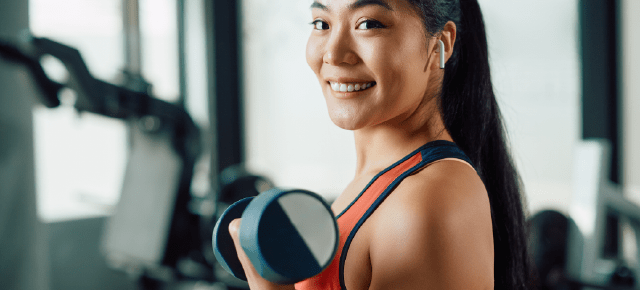With over 50 brands on the market, there’s no doubt that you’ve seen kinesiology tape on all different types of athletes, ranging from high school volleyball players to Olympic-level sprinters. These strips of colorful tape were originally developed in the 1970s to provide support to joints and ligaments without restricting movement, like traditional athletic tape. Today, kinesiology tape is a tried-and-true favorite of many athletes and is a staple in the bag of athletic trainers and physical therapists across the globe.
Before utilizing tape, you should consult with a qualified healthcare professional. Take a look at some of the answers to many common questions surrounding kinesiology taping including:
What is kinesiology taping?
How does kinesiology taping work?
What is the difference between kinesiology tape and athletic tape?
What are the benefits of kinesiology taping?
What Is Kinesiology Taping?
When used properly and implemented by a trained professional, kinesiology taping is a treatment method for injuries or conditions that may cause mobility issues or need additional stability. This technique can be used in all levels of care, from acute injuries to inpatient rehabilitation or return to play activities. Kinesiology taping (or K-tape) uses several different strategies to address issues like pain, weakness, joint support, and more. These tapes are stretched to a specific tension and applied to the treatment area to provide support, reduce swelling and inflammation, re-educate muscles, improve athletic performance, relieve pain, and manage scars.
Each type of k-tape has different properties for specific uses, like higher tension or a certain fabric blend for sensitive skin.
The most commonly used types of k-tape techniques are 25% stretch and 50% stretch . 25% taping, much like the name implies, should be stretched to less than 25% of its maximum tension. This type of tape technique is best used for:
Balance/postural issues
Sharpening reflexes
Decreasing swelling
Improving blood flow and circulation
A 50% tape technique, on the other hand, holds more tension, making it better for uses like:
Pain reduction
Increasing range of motion
Joint support and mobility
Increasing muscle strength or endurance
How Does Kinesiology Taping Work?
While K-tape is used for a number of different injuries, the basic mechanics of this method are the same across all types of treatment. When k-tape is applied correctly, it lifts the skin from the tissues below it. The tape is thought to even position the blood vessels in that area in a way that may increase circulation and blood flow to the injury. This increased blood flow, in turn, may decrease inflammation and swelling.
More research is needed to highlight all of the benefits of kinesiology taping, but early evidence from current research supports that kinesiology taping increases an individuals range of motion, decreases pain, decreases swelling, improves function, and improves quality of life.
What Is the Difference Between Kinesiology Tape and Athletic Tape?
Kinesiology tape and traditional white athletic tape have similar uses, but one is not a replacement for the other. Athletic tape is appropriate when extra stabilization is necessary, since it is much less flexible than kinesiology tape. Sometimes, both types of tape are used to heal an injury — particularly, injuries that may include inflammation and swelling.
K-tape can be used for stability as well as muscle activation.
What Are the Benefits of Kinesiology Taping?
When combined with other manual therapy techniques and implemented by a trained professional or licensed physical therapist, kinesiology taping offers benefits which include supporting weak areas, re-education of muscles, management of scars, improving athletic performance, and increasing blood flow.
Supporting Weak Areas
Whether you’re having issues with swollen joints or fatigued muscles, kinesiology taping can provide you with the additional support you need. Unlike athletic tape, k-tape is flexible and allows you to move normally, which is very important for gymnasts, dancers, runners, or anyone wanting to perform an athletic activity that requires a lot of joint movement.
Enhancing Athletic Performance
Many athletes think that kinesiology taping helps enhance their performance. By providing extra blood flow to large muscles that are important for athletic maneuvers and function, like the quads, these competitors feel like they have greater endurance and improved muscle strength. Many marathon runners apply kinesiology tape before their races to help reach their new personal bests and protect against injury.
Re-Training Muscles
Physical therapists often use kinesiology taping to help re-train muscles that have lost function or do not function properly. Whether it’s re-adjusting how someone holds their head to correct posture issues or improving the muscle memory of someone that’s learning to walk again, this tape can be very benefi


